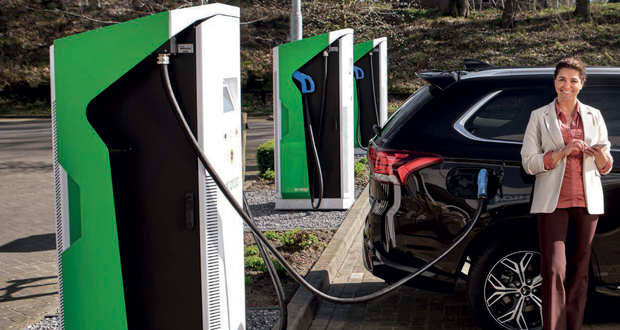Electric vehicle (EV) charge point operators (CPOs) should consider putting plans in place now to achieve higher technical standards and cater for a surge in demand, according to specialists in electrical and digital infrastructure, Legrand UK & Ireland.
The call comes as the company publishes a white paper, ‘Powering the zero emissions transition‘, examining the multifaceted challenges facing the sector this year following a huge rise in the take-up of EVs. Between January and March of 2024 alone, more than 1.72 million plug-in EVs were registered in the UK, topping the total number for 2023 of 1.56 million.
CPOs are currently facing the challenge of equipping all charge points for use by the public with contactless payment ahead of a legislative change in November 2024. The Public Charge Point Regulations 2023 mandate that by November, all new and existing EV chargers 8kW and above for use by the public can accept contactless payments. At the moment, a sizeable proportion of charging points use app-based payment methods, meaning drivers need to be registered with several different CPOs to be able to use the full range of public charging facilities available to them.
Among the issues explored in Legrand’s new white paper are the options open to CPOs to meet this deadline. Supply and load sharing, and equipment quality and interoperability, that will become increasingly important as the transition to EVs continues, are also explained.
Compounding the challenges facing CPOs is the advent of new EV models with increasingly large battery capacities in response to consumer demand for greater range. As a result, lower capacity home charging points are expected to become less practical and, in turn, drive up demand for higher capacity public charging points.
Paul Martin, Lead Marketing Manager for power distribution at Legrand, said: “It won’t be long until the majority of new cars in the UK are reliant on regular access to charge points. Coupled with the fact that a great many UK homes don’t have driveways – and therefore no easy spot for a home charger to be installed – it’s looking like public charge points are going to be powering a large proportion of the cars on our roads.
“This transition to electric vehicles represents a seismic change in Britain’s driving landscape and it will require examining infrastructure and equipment to ensure that CPOs are ready for the logistical challenges, regulatory requirements, as well as business opportunities that lie ahead. To meet the requirements in time, planning needs to begin now.
“With the rise of EVs well underway, CPOs must consider how they are going to approach the increased power supply needs and payment requirements in a way that best suits their businesses.”





